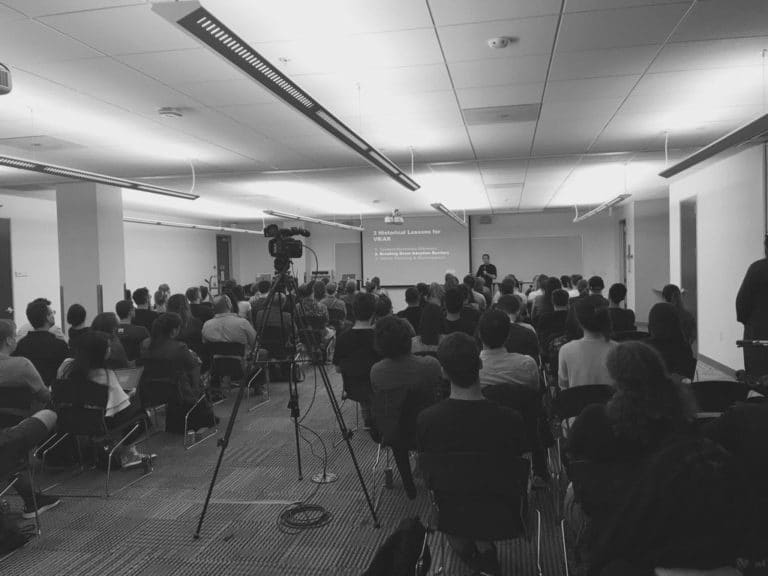
What can VR and AR learn from past tech revolutions? This is a question we’ve been asking ourselves, including a recent conference presentation (see below).
Some of these historical lessons are unfolding as we speak and others can can inform the trajectory — or timing — of upcoming VR and AR opportunities. A few lessons include:
— The iPhone 1’s early “content-starved” days were followed by years of third-party innovation that built on the hardware foundation. That is what we can expect in VR’s future, though we’re currently challenged by a classic “chicken & egg” factor.
— Price will be a big factor in getting to mass adoption, and the steady tick of Moore’s Law could take a few years before we’re at the sub-$400 sweet spot for “all in” high-end VR. But we’re getting there with events like Oculus’ price drop.
— Until the price is right for mass adoption of high end VR ownership, VR Arcades and theme parks will be the vehicles that bring it to the masses. just like video game arcades of the 70s and 80s that preceded home console ubiquity. That will represent a near-term opportunity.
— The most successful VR apps and games will carry the same success factors as smartphone apps. Those that apply “native thinking,” will outperform those that shoehorn legacy media into a new format. Develop to the extent of the platform’s capabilities.
For more, see the full presentation below and stay tuned for more.
Disclosure: ARtillry has no financial stake in the companies mentioned in this post, nor received payment for its production. Disclosure and ethics policy can be seen here.
Acknowledgements: Loreta Tarozaite, Aldo Chaidez, the VR/AR Association, De La Boca Productions and ARVR MunchnLearn
